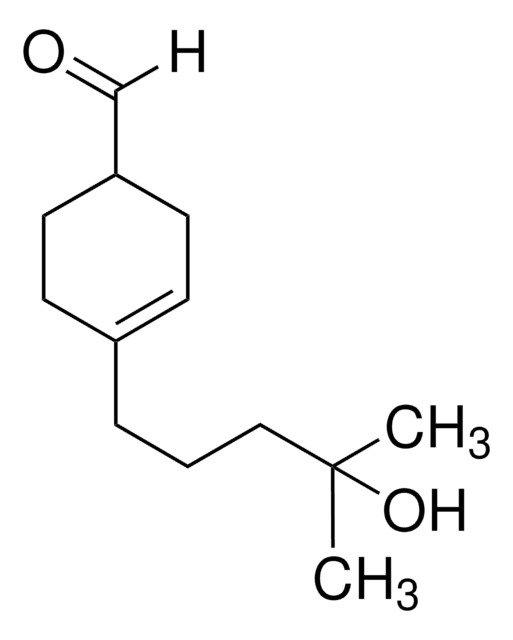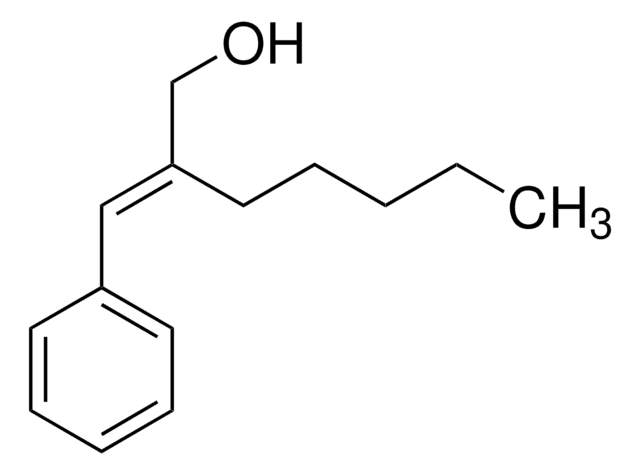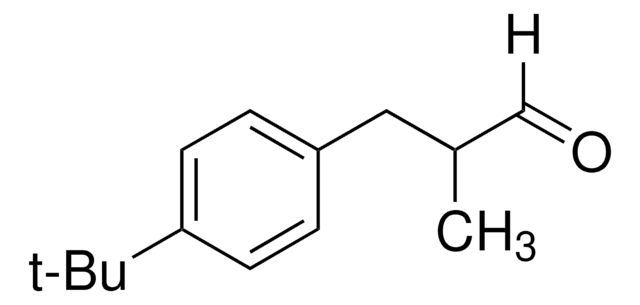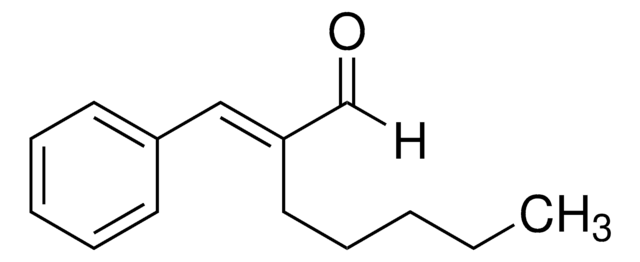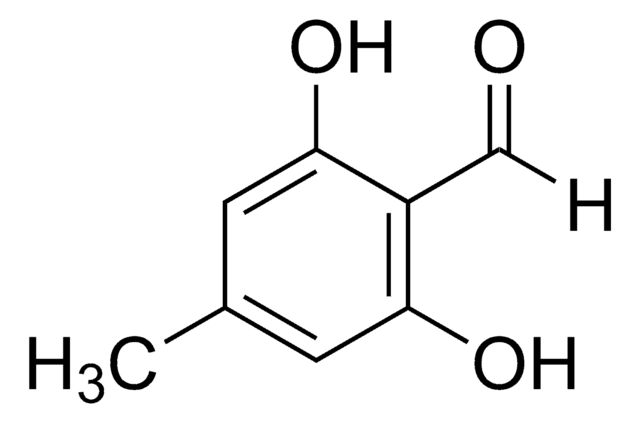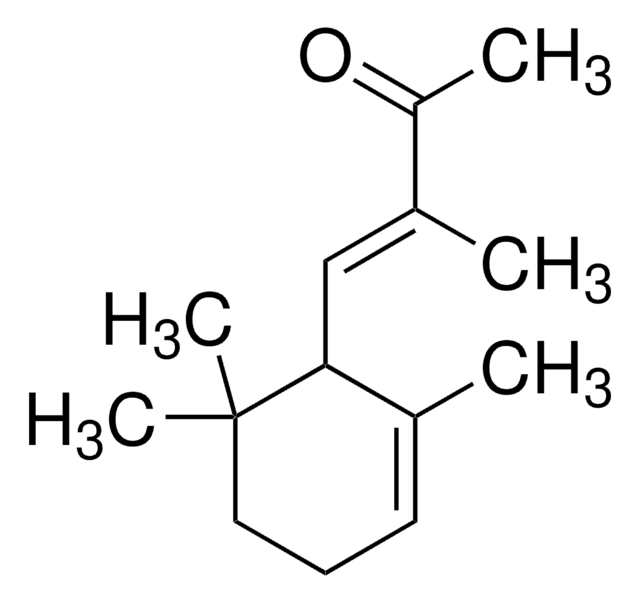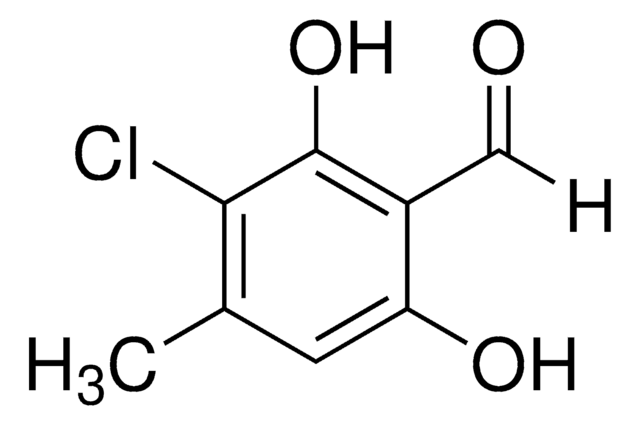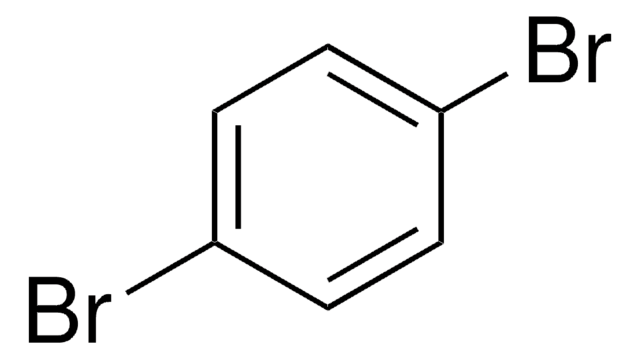95594
4-(4-Hydroxy-4-methylpentyl)-3-cyclohexene-1-carboxaldehyde
mixture of isomers, ≥97.0% (GC)
Synonym(s):
4-(4-Hydroxy-4-methylpentyl)-3-cyclohexene-1-carboxaldehyde, 4-(4-Hydroxy-4-methylpentyl)-3-cyclohexenecarboxaldehyde, 4-(4-Methyl-4-hydroxyamyl)cyclohex-3-ene carboxaldehyde, Landolal, Liral
About This Item
Recommended Products
Quality Level
Assay
≥97.0% (GC)
form
liquid
density
0.995 g/mL at 20 °C
functional group
aldehyde
hydroxyl
storage temp.
2-8°C
SMILES string
[H]C(=O)C1CCC(CCCC(C)(C)O)=CC1
InChI
1S/C13H22O2/c1-13(2,15)9-3-4-11-5-7-12(10-14)8-6-11/h5,10,12,15H,3-4,6-9H2,1-2H3
InChI key
ORMHZBNNECIKOH-UHFFFAOYSA-N
Looking for similar products? Visit Product Comparison Guide
Storage Class Code
10 - Combustible liquids
WGK
WGK 2
Flash Point(F)
275.2 °F
Flash Point(C)
135.1 °C
Personal Protective Equipment
Choose from one of the most recent versions:
Already Own This Product?
Find documentation for the products that you have recently purchased in the Document Library.
Customers Also Viewed
Our team of scientists has experience in all areas of research including Life Science, Material Science, Chemical Synthesis, Chromatography, Analytical and many others.
Contact Technical Service